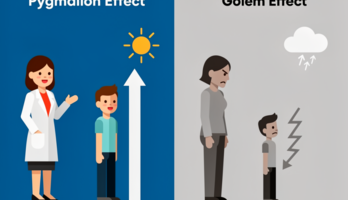M. Hargittai, I. Hargittai - Symmetry through the Eyes of a Chemist (793765), страница 9
Текст из файла (страница 9)
This torque transmits the same frequencies andinduces the same nodes in all the branches. Thus, McLachlan assertsthat the dendritic development is identical in all six branches and isindependent of the particular branch in which the change in theconditions occurred.Intensive research has continued into the mechanism of snowflakeformation [15].
This research encompasses the broader question ofdendritic crystal growth. New approaches, such as fractal models,and copious use of computer simulation have greatly facilitatedthese attempts. It is fascinating how dendritic growth penetrates evenchemical synthetic work witnessed by the development of dendrimerchemistry of ever increasing complexity, which is an example of nanochemistry par excellence [16]. An illustration is given in Figure 2-23.Returning to the snowflakes, an eloquent description of their beautyand symmetry is given by Thomas Mann in The Magic Mountain [18]:2.3.
Combined Symmetries45Figure 2-23. Dendrimers in chemistry after Tomalia and Durst [17], reproducedwith permission from Springer-Verlag.. . . Indeed, the little soundless flakes were comingdown more quickly as he stood. Hans Castorpput out his arm and let some of them to rest onhis sleeve; he viewed them with the knowing eyeof the nature-lover. They looked mere shapelessmorsels; but he had more than once had their like462 Simple and Combined Symmetriesunder his good lens, and was aware of the exquisiteprecision of form displayed by these little jewels,insignia, orders, agraffes—no jeweller, howeverskilled, could do finer more minute work.
Yes, hethought, there was a difference, after all, betweenthis light, soft, white powder he trod with his skis,that weighed down the trees, and covered the openspaces, a difference between it and the sand onthe beaches at home, to which he had likened it.For this powder was not made of tiny grains ofstone; but of myriads of tiniest drops of waterwhich in freezing had darted together in symmetrical variation—parts, then, of the same inorganicsubstance which was the source of protoplasm, ofplant life, of the human body. And among thesemyriads of enchanting little stars, in their hiddensplendour that was too small for man’s nakedeye to see, there was not one like unto anotherand endless inventiveness governed the development and unthinkable differentiation of one andthe same basic scheme, the equilateral, equiangular hexagon.
Yet each, in itself—this was theuncanny, the anti-organic, the life-denying character of them all—each of them was absolutelysymmetrical, icily regular in form. They were tooregular, as substance adapted to life never was tothis degree—the living principle shuddered at thisperfect precision, found it deathly, the very marrowof death—Hans Castorp felt he understood now thereason why the builders of antiquity purposely andsecretly introduced minute variation from absolutesymmetry in their columnar structures.The coldness and lifelessness of too much symmetry is as beautifullyexpressed by Thomas Mann as the beauty of the hexagonal symmetryof the snow crystal. Michael Polányi remarked that an environmentthat was perfectly ordered was not a suitable human habitat [19].Crystallographers Fedorov and Bernal simply stated “Crystallizationis death” [20].2.3.
Combined Symmetries47Human interest in snowflakes has a long history. The oldest knownrecorded statement on snowflake forms dates back to the secondcentury BCE and comes from China according to Needham andLu Gwei-Djen [21]. Six was a symbolic number for water in manyclassical Chinese writings. The contrast between five-pointed plantstructures and six-pointed snowflakes has become a literary commonplace in subsequent centuries. Of several relevant citations collectedby Needham and Lu Gwei-Djen, one is reproduced here, from a statement by a physician from 1189 [22],.
. . the reason why double-kernelled peaches andapricots are harmful to people is that the flowersof these trees are properly speaking five-petalledyet if they develop with sixfold (symmetry), twinning will occur. Plants and trees all have the fivefold pattern; only the yellow-berry and snowflakecrystals are hexagonal. This is one of the principlesof Yin and Yang. So if double-kernelled peachesand apricots with an (aberrant) sixfold (symmetry)are harmful, it is because these trees have lost theirstandard rule.The examination of snowflake shapes and their comparison withother shapes has apparently been a great achievement in East Asia.The involvement of Yin and Yang amply demonstrates how muchimportance was given to these studies.
As a forerunner of the moderninvestigations of the correlation between snowflake shapes and environmental, i.e., meteorological conditions, the following passage fromthe thirteenth century is cited [23]: “The Yin embracing the Yanggives hail, the Yang embracing the Yin gives sleet. When snow getssix-pointedness, it becomes snow crystals. When hail gets threepointedness, it becomes solid. This is the sort of difference that arisesfrom Yin and Yang.”The first known sketches of snowflakes from Europe in thesixteenth century did not reflect their hexagonal shape. JohannesKepler was the first in Europe, who recognized the hexagonalsymmetry of the snowflakes as he described it in his Latin tractateentitled The Six-cornered Snowflake published in 1611 [24]. By thistime Kepler had already discovered the first two laws of planetarymotion and thus found the true celestial geometry when he turned his482 Simple and Combined Symmetriesattention to the snowflakes.
He considered their perfect form and, forthe first time, sought the origin of shape and symmetry in the internalstructure. The relationship between crystal habit and the internal structure will be discussed in the chapter on crystals (Chapter 9).Descartes observed and recorded the shapes of snow crystals.Some of his sketches from 1635 are reproduced in Figure 2-24after U. Nakaya [25].
As these were the first drawings of hexagonal snowflakes recorded, it was quite an achievement that even rareversions such as those composed of a hexagonal column with planecrystals developed at both ends could be found among them. More ofsuch important contributions in this field occurred in the seventeenthcentury [26], among them Hooke’s observations using his microscope.Branching in snow crystals has also been recorded by several investigators.
Among the later works, Scoresby’s observations and sketchesare especially important [27]. Figure 2-25 reproduces some of them.Scoresby, who later became an arctic scientist made these drawings inhis log book in 1806 at the age of 16 while he was on a voyage withhis father to the Greenland whale fisheries.There are two fundamental books—collections of snowflakepictures—available today as a result of photomicrography.W. A.
Bentley devoted his lifetime to taking photomicrographsof snow crystals and collected at least 6000 of them, and about half ofthem appeared in his book co-authored with W. J. Humphreys [30].This most well-known book on snowflakes is probably unsurpassable.Bentley’s photomicrographs have been reproduced innumerable timesin various places—sometimes without indicating the source. SomeFigure 2-24.
Snow crystals by Descartes from 1635 after Nakaya [28].2.3. Combined Symmetries49Figure 2-25. Scoresby’s sketches of snowflakes from his log book (1806) afterStamp and Stamp [29]. Reproduced by permission.characteristic examples of snowflakes from this collection are shownin Figure 2-26.The other outstanding contribution is Nakaya’s [32]. He recordedthe naturally occurring snow crystals, classified them, and investigated their mass, speed of fall, electrical properties, frequency ofoccurrence, and so on.
In addition, Nakaya and co-workers developedmethods of producing snow crystals artificially in their laboratory atHokkaido University in Sapporo. Nakaya and co-workers succeededin determining the conditions of formation of all different types ofsnowflakes. The major part of the general classification of snow crystals by Nakaya is given in Table 2-1 and Figure 2-27.
The hexagonalplane crystals are the most common and the best known.Nakaya made important contributions not only to observing theperfect or near perfect symmetries of the snow crystals but also the502 Simple and Combined SymmetriesFigure 2-26.
Snowflake photomicrographs by Bentley, from Bentley andHumphreys [31].distortions from hexagonal symmetry. Of course, the atomic arrangement is always hexagonal, but the morphology or crystal habit maybe less than perfectly regular hexagonal. Nakaya calls such crystals malformed and states that these asymmetric crystals may bemore common than the symmetric ones. Of course, the questionof symmetry is a matter of degree.
Even the snowflakes which areconsidered to be most symmetrical may reveal slight differences intheir branches when examined closely. Currently intensive work isgoing on in studying snowflakes at the California Institute of Technology [34] and other laboratories. Meteorological research continuesto probe into the various weather conditions to investigate the circumstances of snowflake formation. This work involves field work andobservations as well as studying century-old records in archives.A recent article in The New York Times focused attention to thesemarvels of nature [35].Needle (N)1.
















